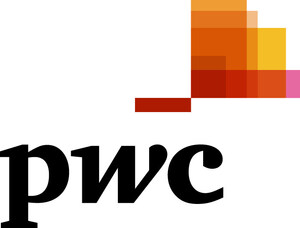SAN JOSE, Calif., July 26, 2012 /PRNewswire/ -- PwC today introduced the Mobile Innovations Forecast (MIF), a new series that provides business leaders with insight and analysis about mobile innovation and the implications to their businesses. Based on a four-part framework that spans enabling technologies, new technological capabilities, new use cases and new business models, the PwC MIF is aimed at helping executives understand the evolutionary curve of technology innovation, which can lead to disruptive products that transform entire ecosystems.
(Logo: http://photos.prnewswire.com/prnh/20100917/NY66894LOGO )
PwC's first MIF report includes the PwC Mobile Technologies Index — a new quantitative method to analyze the rate of improvement in enabling technologies that are fundamental to mobile innovation, and to help forecast new use cases and new business models.
"Mobile computing is one of the leading market forces redefining customer demand, expectations and business opportunity for technology companies," said Tom Archer, PwC US technology sector leader. "The rules are being turned upside down, and mobile computing is generating heated competition for the future of end-user devices, which is creating a battle throughout the value chain, from chips to applications. We expect the same level of disruption in the mobile ecosystem to play out across the technology industry with major market players co-mingling in new ways, in some cases bringing competitors together and, in other cases, turning friends into foes."
The PwC MIF helps business leaders answer key questions such as: Where will disruptions in mobile innovations arise over the next five years? How will these disruptions change consumer and employee behavior? What business opportunities will result? What can companies do to take advantage of these disruptions? How do they fit into broader market trends now driving the technology sector?
PwC believes that disruptive breakthroughs in mobile have resulted, in part, from the continuous progress of seven enabling components that underlie the power of the mobile device to sense, analyze, store and connect information. Therefore, the first PwC Mobile Technologies Index provides an overview of the components, and subsequent reports will explore each component in detail. PwC forecasts a 42 percent combined compound annual growth rate (CAGR) of the Index between 2011 and 2015. Growth rates for each of the seven enabling technologies from 2011 to 2015 are forecast as follows:
- Device connectivity speed: Megabits per second per dollar (Mbps/$) will improve 37 percent CAGR, equating to four times faster in 2015 than in 2011.
- Infrastructure speed: average Megabits per second will improve 54 percent CAGR.
- Processor speed: GigaHertz per dollar (GHz/$) will improve 53 percent CAGR.
- Memory: Gigabits per dollar (Gb/$) will improve 48 percent CAGR.
- Storage: GigaBytes per dollar (GB/$) will improve 35 percent CAGR.
- Image sensor: Megapixels per dollar (MP/$) will improve 20 percent CAGR.
- Display: performance per dollar per square inch (P/$/in2) will improve 18 percent CAGR. Performance is a weighted aggregation of resolution, brightness, power efficiency and other factors.
The PwC Mobile Technologies Index is only a starting point for PwC's ongoing forecasting efforts in mobile innovation. According to PwC, mobile devices and their supporting services will continue to run applications faster, store more data, create better pictures, and display information in brighter and more compelling images, driven by the seven components of the Mobile Technologies Index.
"The seven components, individually or collectively, are not likely to cause the next great disruption in the next five years without creative thinking about how to use them. Specifically, new capabilities, creative use cases and imaginative business models, or some combination, are more likely to produce game-changing mobile innovation," said Kayvan Shahabi, PwC US technology sector advisory leader.
In addition to the Mobile Technologies Index, future PwC MIF articles will explore different aspects of the four-part framework, including new capabilities of emerging and existing technologies; new use cases that arise from performance improvements or entirely new mobile technologies including the extension of the mobile ecosystem into the cloud; and new business models that might increasingly rely on industry dynamics outside of the mobile industry itself. The MIF is part of PwC's framework for understanding dynamics driving the broader technology sector.
For additional analysis and commentary on PwC's Mobile Innovations Forecast, please visit: www.pwc.com/mobileinnovations.
About the PwC Network
PwC firms help organizations and individuals create the value they're looking for. We're a network of firms in 158 countries with close to 169,000 people who are committed to delivering quality in assurance, tax and advisory services. Tell us what matters to you and find out more by visiting us at www.pwc.com.
© 2012 PricewaterhouseCoopers LLP, a Delaware limited liability partnership. All rights reserved. PwC refers to the US member firm, and may sometimes refer to the PwC network. Each member firm is a separate legal entity. Please see www.pwc.com/structure for further details.
SOURCE PwC
WANT YOUR COMPANY'S NEWS FEATURED ON PRNEWSWIRE.COM?
Newsrooms &
Influencers
Digital Media
Outlets
Journalists
Opted In




Share this article